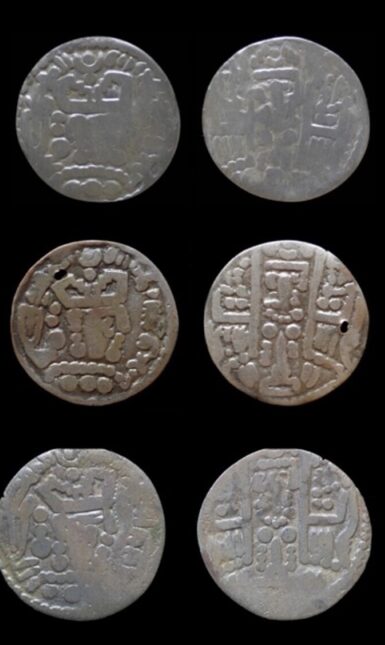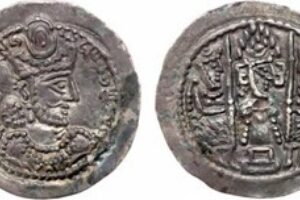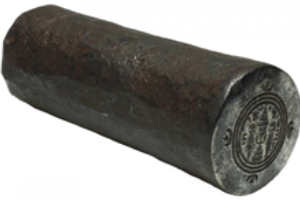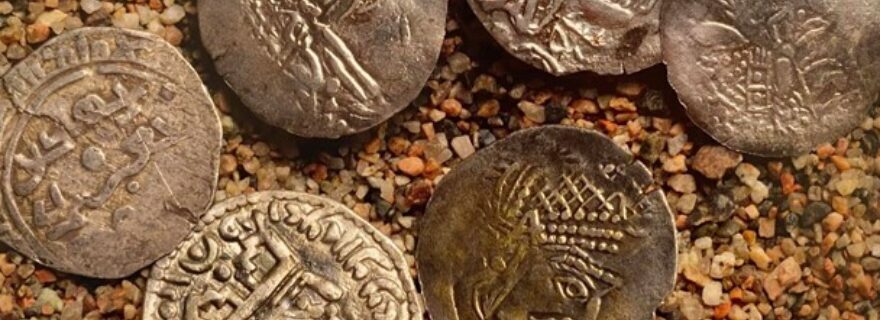Flattery and Flans: Imitation in Islamic Numismatics
During the Early Islamic Period, a variety of coins emerged from the dying empires of Rome and Iran that helped the local Central Asian economies supply of silver for the next several hundred years. One of these coins was centred around one city that would rise from conquests and continue to thrive.
Growing up in Canada it was not uncommon to find US coins in my change. As US and Canadian coins are almost identical in size, weight, and general appearance, when paying for my double-double (known as coffee to non-Canadians) I would occasionally encounter an awkward exchange of “Sir, these are American” as I suddenly realized I had tried to pay with US coins. It is within this experience that I have always found the use of currency outside of their intended environments intriguing. Why is it that when you travel, almost every country accepts US dollars, British pounds, and euros? But you would struggle to get by with Canadian dollars, Chinese yuan, or Russian roubles?
This question now takes us back to the 7th century when the armies of the Rashidun and later Umayyad caliphate swept across the Middle East and Central Asia. Many historians have looked on this period as a sudden change in the known world. It is often seen as if one timeline stopped, and another began. This may in fact not be the case, as seen in some examples of the coinage used in the early Islamic states, such as those in and around the city of Bukhara (in modern-day Uzbekistan). The coinage used is not a break from earlier Persian traditions, but a continuation, which leads to the question: is Early Islamic Coinage an example of continuation of previous cultures? Through careful analysis it can be seen how the political powers in city states like Bukhara adapted earlier Sasanian minting traditions we can see how coins took a role beyond being tools of trade.
Who are the Bukhar Khudats?
The Bukhar Khudats were a Sogdian dynasty, which ruled the city of Bukhara from around the fall of the Sasanian dynasty in 651 CE to when the areas were conquered by the Samanid Empire around 888 CE. During their reign, a type of coinage known generally as the Bukharkhudat coins appeared throughout Central Asia. The coins follow a very Sasanian like style with the Shah in profile and on the other side a fire temple with priests or attendants beside it (see figure 2). They sometimes have Sogdian or Arabic in place of the Pahlavi script. They also sometimes feature less silver content, than a normal Sasanian drachm, being therefore referred to as “black dirhams.”


One aspect that may be useful into understanding the design of this coin type is that the start of the Bukharkhudat coins seem to be based on some form of imitation of the drachms of the Sasanian Shah Bahram V (420 to 438 CE, also spelled Varakhran V, Wahram V or Warahran V, see figure 3), especially those minted in the nearby mint of Merv. This is important as Merv provided a large amount of the drachmas of the Sassanian empire. When the production at Merv stopped (from around 440 till 620), only these drachms of Bahram V would have been able to enter circulation in a place like Bukhara (Loginov & Nikitin 1984). This is fascinating as this means the style would have been present for around 400 years in one form or another. Which then begs the question, why?
Does this still happen?
This question of why brings us back to the modern world and to places like the UK, where pre-decimal coinage was officially ended in 1971. Before this it would have been normal to find a Queen Victoria coin mixed in with coins from the reigning monarch Elizabeth II, alongside George VI and George V coins. This is because a 1 penny from 1860 and 1960 would have had the same value no matter who was on the back of the coin. It would of course make it logical to think that a newly formed state like those trying to eke out a living in the power vacuum left by the Sasanians, would want to use coins that are already well known in a region.


How was this done?
This is especially important as Sasanian coins are well known for their silver purity (up to 98% which is comparable to modern coinage) in an age where the value of a coin was based around its weight more than anything else. I personally have pondered this sort of concept, as any world traveller knows that American dollars, British pounds, and euros are accepted virtually everywhere, but the same cannot be said for Canadian or Australian dollars, despite them being of good value in their respective countries. One must consider that the process of minting coins in this period involved taking a die stamp (figure 4) and a blank flan (the blank piece of silver that becomes the coin) and striking them. In theory a leader who occupied Merv or any other minting centre could simple take these dies and a series of flans and strike as many coins as they desire.

In conclusion, when looking at the numismatics of states long gone, we must remember that despite everything going on around us, some things do not change. People still need to be paid. People still need to eat. Supply chains must keep going. These concepts cannot function without a working monetary system. As someone who has worked abroad several times, one of the first things an applicant will check is how much is the pay and what currency is it being paid in. In the Netherlands we pay and get paid in euros, but this is also a currency that is accepted in most parts of the globe. For someone living in Bukhara in the 8th century, they would have wanted proper compensation and the ability to pay for things just as we do. So, what does a government do? The basic answer, they mint coins that they are familiar with and that they know will work within their economy. The Bukharkhudat coins as an example of this phenomenon of imitation still need to be studied significantly more for us to understand them. It is my hope that through my own PhD research, and other projects, that our field can answer some of the questions that still need to be asked.
Works cited
Baumer, C. and M. Novák. 2019. Urban cultures of Central Asia from the Bronze Age to the Karakhanids. Wiesbaden: Harrassowitz Verlag.
Loginov S.D., Nikitin A.B., 1984. Monety carja Merva // Pamitniki Turkmenistana. Ashhabad. No 1 (37).
This blogpost previously appeared on the Leiden Medievalists Blog.
Unauthorised use and/or duplication of this material without express and written permission from this site’s author and/or owner is strictly prohibited. Excerpts and links may be used, provided that full and clear credit is given to Jonathan Ouellet and Leiden Medievalists Blog with appropriate and specific direction to the original content.



0 Comments
Add a comment